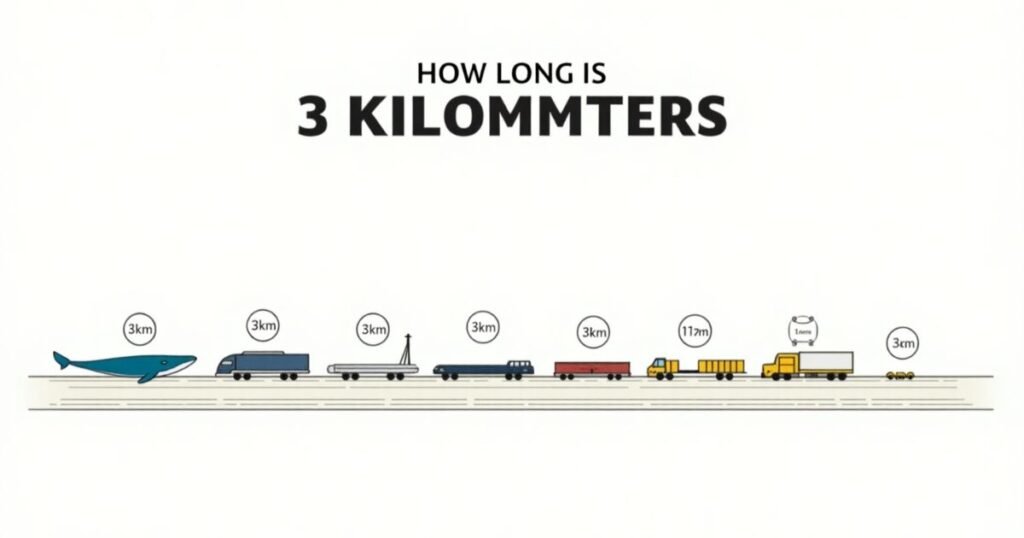Have you ever been told that your destination is “about 3 kilometers away” and wondered exactly how far you’d need to walk? Or perhaps you’ve seen this measurement on a fitness app and questioned what it means in terms of real-world distance? While the metric system is used globally, visualizing specific measurements can sometimes be challenging, especially when we’re trying to grasp distances beyond what we can immediately see.
Three kilometers a distance that sits comfortably between a casual stroll and a committed hike appears frequently in our daily lives, from morning jogs to travel directions. Yet, without proper context, it remains just a number. In this article, we’ll explore familiar landmarks, everyday routes, and notable features that span approximately 3 kilometers, helping you develop an intuitive understanding of this distance.
How Long is 3 Kilometers?
Three kilometers equals exactly 3,000 meters or approximately 1.86 miles. For those who think in terms of steps, walking 3 kilometers typically requires around 3,900 to 4,200 steps, depending on your stride length. At an average walking pace of 5 kilometers per hour, it would take about 36 minutes to cover this distance. For runners maintaining a 10 kilometers per hour pace, 3 kilometers represents a manageable 18-minute run, a distance that’s substantial enough to get your heart rate up but not so demanding that it requires extensive training.
Now, let’s explore seven things that are approximately 3 kilometers long to help you better visualize this distance in real-world contexts.
1. The Golden Gate Bridge (Including Approaches)
The Golden Gate Bridge, San Francisco’s iconic landmark, spans the Golden Gate Strait and connects San Francisco to Marin County. While the main suspension span is 1.7 kilometers (1.1 miles), when you include the approaches on either side, the total distance closely approximates 3 kilometers.
This internationally recognized symbol of engineering excellence carries both US Highway 101 and California State Route 1 across the strait. Completed in 1937, the bridge was built to withstand the harsh environmental conditions of the San Francisco Bay, including strong winds, dense fog, and potential seismic activity.
The bridge’s distinctive “International Orange” color was specifically chosen to enhance its visibility in fog while complementing the natural surroundings. This vibrant hue has become so closely associated with the structure that it’s now officially known as “Golden Gate Bridge Orange.”
Walking from one end of the bridge to the other, including its approaches, gives pedestrians an excellent sense of what 3 kilometers feels like a journey that typically takes about 45 minutes at a leisurely pace while offering spectacular views of the San Francisco skyline, Alcatraz Island, and the Pacific Ocean.
2. Central Park’s Main Loop
New York City’s Central Park features a main recreational path that encircles the majority of the park’s attractions. This popular route, known as “The Loop,” measures approximately 2.85 to 3.1 kilometers (depending on which side paths you take), making it an almost perfect 3-kilometer circuit.
The Loop serves as a central artery for the park, guiding visitors past famous landmarks such as the Bethesda Fountain, Strawberry Fields, the Jacqueline Kennedy Onassis Reservoir, and the Metropolitan Museum of Art. It’s a car-free haven for joggers, cyclists, and walkers, particularly during weekends when motorized traffic is prohibited throughout the park.
The path’s relatively flat terrain makes it accessible to people of all fitness levels, though it does feature a few gentle inclines, particularly around the park’s northern section. Completing The Loop gives visitors a comprehensive taste of what Frederick Law Olmsted and Calvert Vaux envisioned when they designed this urban oasis in the 1850s.
Interestingly, this 3-kilometer circuit has been used as a practice course for countless marathon runners preparing for the New York City Marathon, providing a standardized distance for training programs while offering the psychological benefit of clear landmarks and rest areas.
3. The Las Vegas Strip (Main Section)
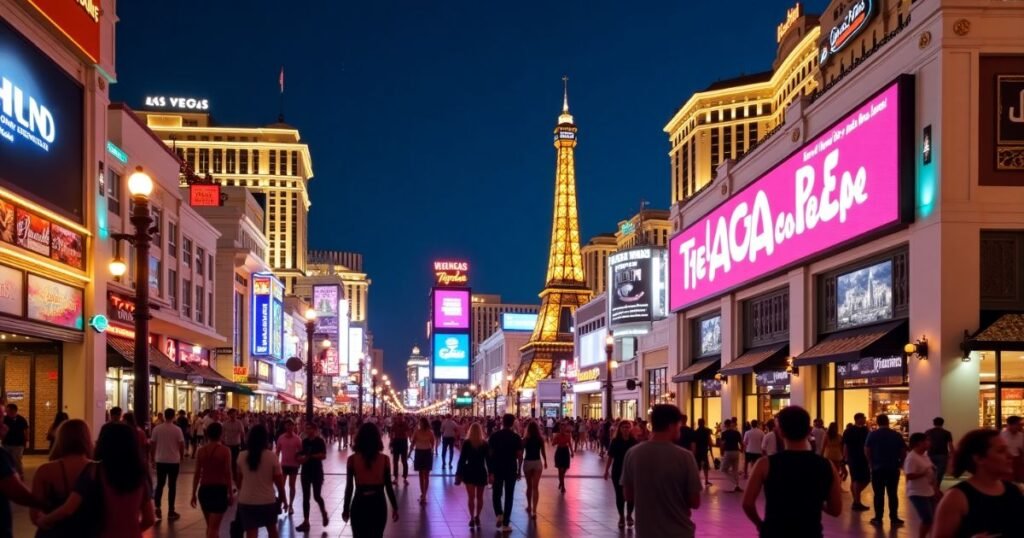
The most vibrant and visited section of the Las Vegas Strip from the Mandalay Bay Resort on the south end to the Stratosphere Tower on the north spans approximately 3 kilometers. This relatively compact distance contains one of the world’s highest concentrations of entertainment, luxury hotels, and casino resorts.
Walking the Strip provides visitors with a surreal journey through replicas of global landmarks, from the Eiffel Tower and Venetian canals to Egyptian pyramids and New York City skyscrapers. Despite being just 3 kilometers long, this stretch of Las Vegas Boulevard contains 17 of the world’s 20 largest hotels by room count, representing over 67,000 rooms collectively.
The compact nature of the Strip is both a blessing and a challenge for tourists. While everything is technically within walking distance, the combination of Nevada’s desert heat, crowds of pedestrians, and the visually overwhelming environment means that walking the entire Strip often takes longer than expected, typically 45 to 60 minutes without stops.
A little-known fact about the Strip is that many of the buildings appear closer than they actually are due to architectural tricks and forced perspective. The MGM Grand, for example, looks deceptively close to Caesars Palace, yet walking between them covers nearly one kilometer of the Strip’s 3-kilometer main section.
4. The Great Wall of China’s Mutianyu Section
While the entire Great Wall of China stretches thousands of kilometers across northern China, the restored Mutianyu section popular with tourists measures approximately 3 kilometers in length. Located about 70 kilometers northeast of Beijing, this section of the wall features 22 watchtowers distributed along its mountainous route.
The Mutianyu section dates back to the Ming Dynasty (1368-1644) and represents one of the best-preserved parts of the Great Wall. Its strategic location along a mountain ridge provides stunning panoramic views of the surrounding landscape, making it a favorite among photographers and hikers.
Walking the entire 3-kilometer stretch of Mutianyu takes between 1 to 2 hours, depending on your pace and how frequently you stop to explore the watchtowers or appreciate the views. The varying elevations along this section make it a more challenging 3-kilometer walk than one might experience on flat terrain, with some inclinations reaching up to 60 degrees.
What makes this 3-kilometer stretch particularly significant is that it offers visitors a microcosm of the Great Wall’s architectural features, including crenellated parapets, defensive watchtowers, and garrison quarters. The craftsmanship visible in this relatively short section demonstrates why the Great Wall is considered one of the world’s most impressive engineering feats.
5. An Average Cruise Ship
Modern cruise ships have grown to enormous proportions, with the largest vessels like Royal Caribbean’s Symphony of the Seas and Wonder of the Seas measuring around 362 meters (0.362 kilometers) in length. While no single cruise ship reaches 3 kilometers in length, you would need to line up approximately 8-9 of these massive vessels bow-to-stern to reach a 3-kilometer distance.
To put this into perspective, if you were to walk every accessible deck, corridor, and public space on a large cruise ship like the Symphony of the Seas, including its 16 passenger decks, you would cover a distance of roughly 3 kilometers. This gives passengers a sense of just how vast these floating cities are despite their relatively compact external dimensions.
Modern cruise ships are engineering marvels that function as self-contained environments, carrying everything from multiple swimming pools and theaters to restaurants, casinos, and even ice skating rinks. The largest vessels can accommodate over 6,000 passengers and 2,000 crew members.
A fascinating fact about these massive ships is that they’re designed with a slight curvature to their long corridors. This subtle design feature prevents passengers from seeing the entire length of the vessel at once, which would create an overwhelming sense of distance. Instead, the curved hallways break up the space visually, making the ship feel more manageable despite its enormous size.
6. The Burj Khalifa, Stacked 3 Times
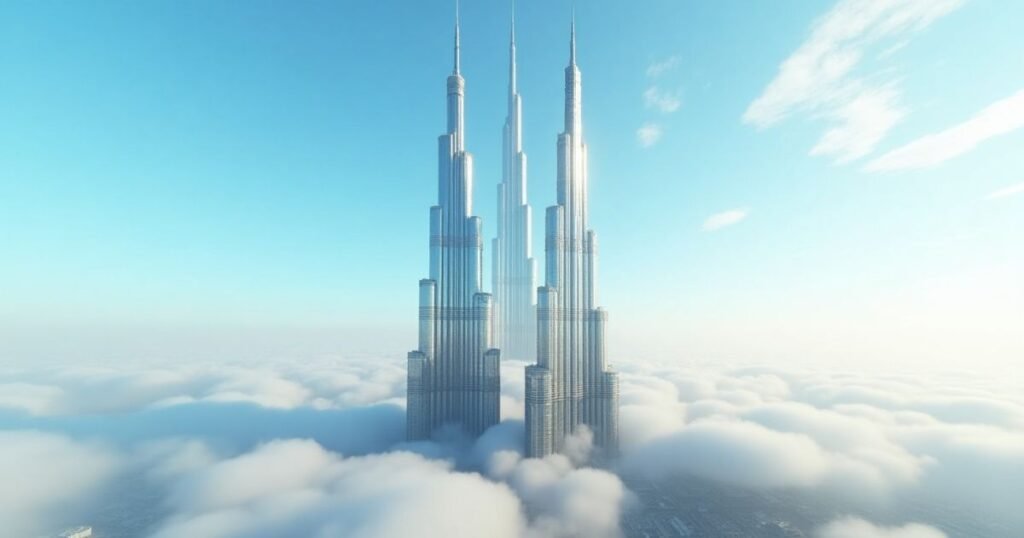
The Burj Khalifa in Dubai, currently the world’s tallest building, stands at an impressive 828 meters (0.828 kilometers) tall. If you were to stack this architectural marvel approximately 3.6 times, you would reach a height of about 3 kilometers extending well into the lower reaches of the Earth’s atmosphere.
To walk a distance equivalent to the Burj Khalifa’s height, you would need to climb its 2,909 steps from ground level to the 160th floor, a journey that would cover just over one-quarter of our 3-kilometer benchmark. To complete a full 3 kilometers, you would need to make this climb nearly four times.
The building’s height is so significant that the temperature at its top is typically 6°C (11°F) cooler than at ground level, creating what amounts to different climate zones within a single structure. Similarly, during sunset, people at the top can still see daylight for several minutes after those at ground level have entered darkness.
An interesting fact about the Burj Khalifa relevant to our 3-kilometer perspective: if you were to unwind all the electrical wiring contained within the building, it would stretch over 5,500 kilometers, nearly 1,850 times the building’s height and enough to reach from Dubai to Cairo and back.
7. An Average 18-Hole Golf Course
While golf courses vary significantly in size and layout, a typical 18-hole course requires players to walk approximately 3 kilometers from the first tee to the final green when measuring the most direct route. However, when accounting for the natural walking patterns of players moving between shots, the actual distance covered often exceeds 6-7 kilometers.
The standardized 18-hole course emerged in the mid-19th century at the Old Course at St Andrews in Scotland, establishing a template that has since been replicated worldwide. Today’s golf courses are designed to challenge players with a variety of hole lengths and configurations while maintaining a total distance that can be comfortably walked in a 4-hour round.
Modern golf course architects carefully consider the terrain, prevailing winds, and natural features when designing layouts. This attention to detail ensures that even courses with similar total distances can present vastly different challenges and experiences for players.
A fascinating aspect of golf course design is the concept of “routing,” where architects create a journey that returns players to the clubhouse at the midpoint (after 9 holes) and again at the end of the round. This efficient use of land compresses the 3-kilometer direct distance into a smaller footprint through strategic placement of tees, fairways, and greens.
How to Visualize 3 Kilometers in Everyday Life
Understanding the scale of 3 kilometers becomes easier when we relate it to everyday experiences:
- Walking time: At an average pace, 3 kilometers takes about 36-45 minutes to walk
- Running time: For recreational runners, 3 kilometers represents a 15-20 minute run
- Driving time: In urban areas with traffic, driving 3 kilometers might take 5-10 minutes
- Public transit: A 3-kilometer subway or bus ride typically includes 2-3 stops
To estimate 3 kilometers without measuring tools:
- Use city blocks: In many urban grid systems, 20-25 blocks equals approximately 3 kilometers
- Count landmarks: In suburban areas, passing 30-40 houses often represents about 3 kilometers
- Time your walk: If you maintain a consistent pace of 5 km/h, walking for 36 minutes covers 3 kilometers
- Use song length: Listening to 10-12 average pop songs (3 minutes each) while walking at a steady pace will typically cover 3 kilometers
Practical Applications of Understanding 3 Kilometers
Knowing what 3 kilometers feels like in real terms has several practical applications:
Fitness and Health
Three kilometers represents an ideal distance for beginning runners or people starting a walking routine. It’s substantial enough to provide cardiovascular benefits but not so demanding that it requires extensive training or recovery time. Many fitness experts recommend starting with a 3-kilometer walk or run before gradually increasing distance and intensity.
Travel Planning
When exploring a new city, understanding that major attractions are “about 3 kilometers apart” helps you decide whether to walk or use transportation. This knowledge can save time, money, and energy, especially in cities with congested traffic or limited parking where walking 3 kilometers might actually be faster than driving.
Real Estate and Housing
When searching for a new home, knowing that schools, parks, or shopping centers are “within 3 kilometers” gives you a concrete sense of how accessible these amenities are. A 3-kilometer radius around a property typically represents what urban planners consider a “walkable neighborhood” close enough for occasional walks but potentially requiring transportation for daily commutes.
Environmental Awareness
Choosing to walk or bike distances under 3 kilometers instead of driving can significantly reduce your carbon footprint. Studies show that approximately 35% of car trips in urban areas cover distances of 3 kilometers or less that could potentially be replaced with more sustainable transportation options.
8. The Panama Canal’s Culebra Cut
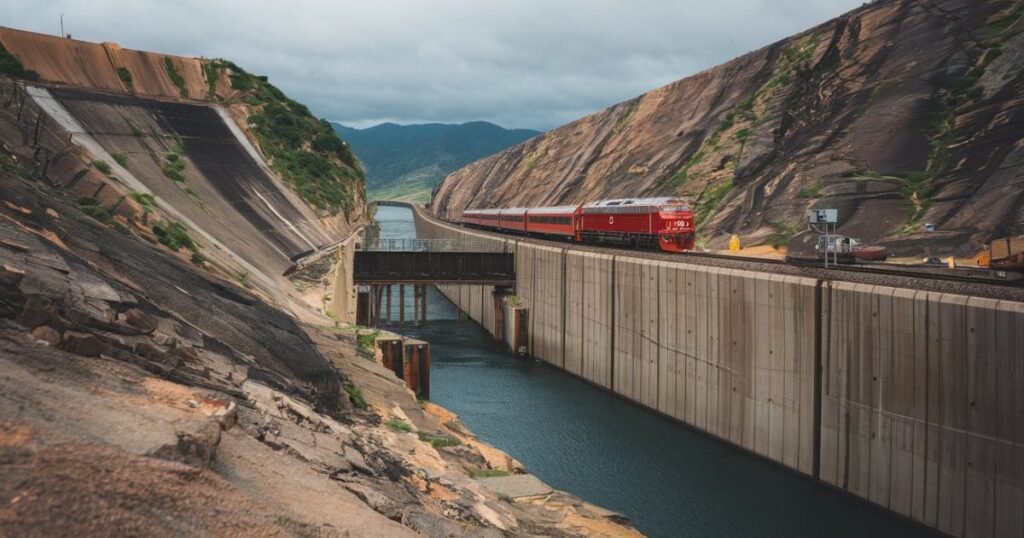
The Culebra Cut (now called the Gaillard Cut) represents one of the most challenging sections of the Panama Canal, spanning approximately 3 kilometers through the continental divide of Panama. This artificial valley was carved through the mountainous spine of Central America, requiring the removal of over 100 million cubic meters of earth and rock.
This 3-kilometer stretch epitomizes the engineering challenges faced during the canal’s construction from 1904 to 1914. Workers confronted deadly landslides, tropical diseases, and the immense technical difficulty of cutting through varying rock formations while maintaining stable slopes for the canal walls.
Today, this section remains critical to global shipping, as it connects the Atlantic and Pacific Oceans through the narrowest part of the isthmus. Ships traversing this 3-kilometer segment navigate between steep banks rising up to 100 meters above the water level on either side.
What makes this particular 3-kilometer stretch historically significant is that it was here, in the Culebra Cut, where the highest mortality rates occurred during construction. The challenging conditions claimed thousands of lives, predominantly West Indian laborers, making each meter of this 3-kilometer section a testament to the human cost of one of history’s greatest engineering achievements.
9. The Ancient City Walls of Xi’an
The ancient city walls of Xi’an, China, form an almost perfect rectangle with a total perimeter of approximately 14 kilometers, with each side averaging about 3.5 kilometers. The south wall, the most well-preserved section, measures almost exactly 3 kilometers and represents one of the most complete ancient military defensive systems in the world.
Built during the Ming Dynasty (1368-1644), these massive fortifications stand 12 meters high and measure 15-18 meters wide at the base, tapering to 12-14 meters at the top wide enough for 6 horsemen to ride side by side. The walls encircle Xi’an’s historical center, the former imperial capital of ancient China.
Walking the southern wall from the South Gate to the West Gate covers approximately 3 kilometers and takes visitors on a journey through Chinese military architecture, featuring 98 ramparts designed for defenders to observe and attack approaching enemies without exposing themselves to danger.
A fascinating aspect of these walls is their construction technique: the core consists of tamped earth and quicklime, materials that become stronger over time through a chemical reaction. This ancient “concrete” has allowed the structure to withstand earthquakes and weathering for over 600 years, making this 3-kilometer stretch one of the best-preserved ancient city walls globally.
10. The Paris Catacombs’ Official Tourist Route
Deep beneath the streets of Paris lies a labyrinth of tunnels housing the remains of approximately six million people. While the entire network spans over 300 kilometers, the official tourist route open to the public measures almost exactly 3 kilometers, taking visitors through a carefully curated section of this underground ossuary.
This 3-kilometer route begins at Place Denfert-Rochereau in the 14th arrondissement and winds through former limestone quarries that were repurposed in the late 18th century to address Paris’s overflowing cemeteries. What started as a practical solution to a public health crisis evolved into an elaborately arranged memorial, with bones artfully stacked and skulls placed in patterns along the tunnel walls.
Walking this underground path takes approximately 45 minutes, though many visitors spend longer examining the macabre displays and reading the philosophical inscriptions that punctuate the route. The consistent 14°C (57°F) temperature and 95% humidity create an atmosphere that remains unchanged regardless of weather conditions above ground.
Perhaps most remarkable about this 3-kilometer journey is that it represents less than 1% of the total tunnel network beneath Paris. The remaining sections, known as “les carrières” (the quarries), are officially off-limits, though urban explorers known as “cataphiles” regularly venture into these unmapped areas, sometimes traveling for kilometers through the darkness.
11. The High Line in New York City
The High Line, one of New York City’s most innovative urban renewal projects, is an elevated linear park built on a former freight rail line. The complete path from Gansevoort Street in the Meatpacking District to Hudson Yards measures approximately 2.7 kilometers (1.45 miles) very close to our 3-kilometer benchmark.
This elevated greenway stands 9 meters above street level, offering unique perspectives of Manhattan’s west side while guiding visitors through neighborhoods that were once industrial centers. The park’s narrow design never exceeding 18 meters in width creates an intimate experience despite being surrounded by the sprawling metropolis.
Walking the entire High Line provides a carefully curated journey through over 500 species of plants and trees, many of which were chosen to pay homage to the wild vegetation that had naturally colonized the abandoned railway before its transformation. The path includes observation points, water features, and integrated seating areas that encourage visitors to linger and observe the city from new angles.
What makes this nearly 3-kilometer stretch particularly significant is its economic impact; property values along the High Line have increased by over 103% since its first section opened in 2009, generating an estimated $2 billion in new economic activity. This demonstrates how a thoughtfully designed 3-kilometer path can transform not just physical space but the economic and social fabric of surrounding communities.
12. The Inca Trail’s Dead Woman’s Pass to Sun Gate Section

While the complete Classic Inca Trail spans approximately 42 kilometers over four days of hiking, the most dramatic and challenging section runs from Dead Woman’s Pass (Warmiwañusca) to the Sun Gate (Intipunku), covering approximately 3 kilometers of steep, stone-paved pathways through the Andes Mountains.
This particular section includes some of the most breathtaking scenery and impressive Incan engineering along the entire route. Hikers traverse ancient staircases carved directly into the mountainside, with some individual steps measuring more than 30 centimeters in height, a challenging climb especially considering the altitude of 4,200 meters above sea level.
The significance of this 3-kilometer stretch lies in its role as the final approach to Machu Picchu. After days of hiking, travelers reaching this section know they are nearing their ultimate destination. The path winds through cloud forests and alpine terrain before suddenly revealing the iconic 15th-century Incan citadel through the Sun Gate.
What’s remarkable about this section is that despite being built over 500 years ago without modern tools or techniques, the stone path has withstood centuries of harsh mountain weather and thousands of footsteps. The precision of the stonework is so exact that in many places not even a knife blade can be inserted between stones, a testament to Incan engineering that has endured for half a millennium.
13. The National Mall in Washington, D.C.
The National Mall, America’s most visited national park, stretches approximately 3 kilometers from the steps of the United States Capitol to the Lincoln Memorial. This carefully designed landscape serves as the ceremonial heart of the nation’s capital and a stage for American democracy in action.
This iconic 3-kilometer expense includes some of the country’s most recognizable monuments and museums, including the Washington Monument, the World War II Memorial, and the Smithsonian Institution buildings. The wide, open design was intentional and Pierre L’Enfant’s 1791 plan for the city specifically called for a “grand avenue” to connect the legislative and executive branches of government.
Walking the entire Mall takes approximately 45 minutes without stops, though most visitors spend an entire day exploring the numerous sites along the way. The route has witnessed many pivotal moments in American history, from presidential inaugurations to civil rights demonstrations, including Martin Luther King Jr.’s famous “I Have a Dream” speech.
A fascinating aspect of this 3-kilometer stretch is its careful alignment with celestial events. On the summer solstice, the sun rises exactly in line with the Capitol building and sets directly behind the Lincoln Memorial when viewed from the east end of the Mall, an intentional design element that connects this human-made landscape to the cosmic movements that have guided civilizations for millennia.
14. The Suez Canal’s Narrowest Section
The Suez Canal, one of the world’s most crucial maritime chokepoints, features a particularly narrow section near the city of Suez that stretches approximately 3 kilometers. This constricted passage, part of the 193-kilometer waterway connecting the Mediterranean and Red Seas, represents one of global shipping’s most strategic and vulnerable segments.
Within this 3-kilometer stretch, the canal narrows to a width of just 205 meters with a depth of 24 meters, dimensions that leave little room for error when navigating modern cargo vessels that can span up to 61 meters in width. This section requires precise piloting and often creates a bottleneck for the approximately 50 ships that transit the canal daily.
The strategic importance of this 3-kilometer segment became painfully evident in March 2021 when the container ship Ever Given became wedged across the canal, completely blocking maritime traffic for six days. This single incident in this small section of the canal disrupted an estimated $9.6 billion of trade daily and affected supply chains worldwide.
What makes this particular 3-kilometer stretch historically significant is that it was here, during the 1956 Suez Crisis, that Egypt’s President Nasser nationalized the canal by symbolically blocking this narrow passage. This action triggered an international crisis involving Britain, France, and Israel, ultimately reshaping Middle Eastern geopolitics and marking the decline of European colonial influence in the region.
15. The Champs-Élysées in Paris
The Avenue des Champs-Élysées, one of the world’s most famous boulevards, stretches approximately 2.9 kilometers from the Place de la Concorde to the Arc de Triomphe in Paris. This nearly 3-kilometer promenade represents the epitome of Parisian urban planning and has been called “la plus belle avenue du monde” (the most beautiful avenue in the world).
Measuring 70 meters wide, this grand thoroughfare was originally laid out in 1667 as an extension of the Tuileries Gardens. Its transformation from marshland to elegant promenade occurred throughout the 18th and 19th centuries, evolving into the commercial and cultural corridor we recognize today.
Walking the entire avenue at a leisurely pace takes approximately 45 minutes and guides visitors past luxury boutiques, theaters, cafés, and meticulously manicured gardens. The eastern section features expansive green spaces, while the western portion hosts prestigious flagship stores representing global brands.
What makes this 3-kilometer stretch particularly significant is its role in French national identity and celebrations. The avenue serves as the final leg of the Tour de France cycling race and the main parade route for Bastille Day celebrations on July 14th. During these events, approximately one million spectators line this relatively short stretch, demonstrating how a well-designed 3-kilometer corridor can accommodate massive public gatherings while maintaining its elegance and functionality.
16. The Nazca Line “Hummingbird” and Surrounding Figures
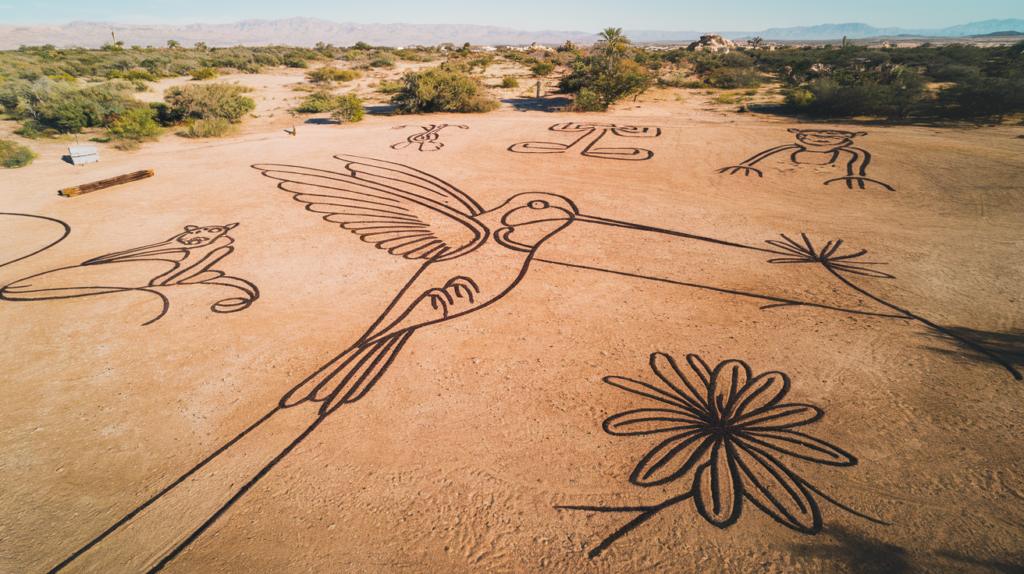
The Nazca Lines in Peru include a remarkable concentration of geoglyphs within an approximately 3-kilometer radius that contains some of the most recognizable figures, including the famous Hummingbird. This specific area represents one of the densest collections of these mysterious ground drawings created between 500 BCE and 500 CE.
Within this 3-kilometer zone in the arid Peruvian coastal plain, the ancient Nazca culture created massive figures by removing the reddish-brown iron oxide-coated pebbles that cover the surface to reveal the lighter-colored earth beneath. The Hummingbird figure alone spans 93 meters from wingtip to wingtip almost the length of a modern football field.
The significance of this concentrated 3-kilometer area lies in the astronomical alignments of the figures. Researchers believe many of the lines correspond to celestial events, with the Hummingbird potentially pointing toward the winter solstice. Walking the perimeter of this 3-kilometer zone would take approximately 45 minutes, though the designs themselves are best appreciated from above.
Perhaps most remarkable about this 3-kilometer concentration is the precision achieved without modern surveying equipment. The lines maintain perfect proportions despite their massive scale, suggesting the Nazca people possessed sophisticated mathematical and astronomical knowledge. These figures have endured for over 1,500 years due to the region’s extremely dry, windless conditions preserving what amounts to one of humanity’s largest artworks within this relatively small area.
Conclusion
Three kilometers a distance that sits comfortably between a casual stroll and a committed journey proves to be a surprisingly common and meaningful measurement in our daily lives. From the magnificent span of the Golden Gate Bridge to the carefully designed layout of a golf course, this distance appears repeatedly in human-made structures and recreational spaces.
Understanding what 3 kilometers feels like in real terms helps us make better decisions about transportation, fitness, and time management. It provides a useful benchmark for estimating distances in unfamiliar environments and planning daily activities.
Next time you hear that something is “about 3 kilometers away,” you’ll have a rich mental library of comparisons to draw upon whether it’s walking the length of Central Park’s main loop, traversing the Las Vegas Strip, or making your way through a section of the Great Wall of China. This knowledge transforms an abstract measurement into a tangible, relatable experience.
As a final thought, try this simple exercise: Look at a map of your neighborhood and identify landmarks or destinations that are approximately 3 kilometers from your home. You might be surprised to discover just how much of your daily life occurs within this radius and how many new places remain to be explored just a short journey away.
How Many Feet Are In An Acre?
12 Things and Animals That Are 10 Feet Long
13 Common Things That Are 2 Inches Long/Big

I’m Ryan Miles, and I love making measurements simple. My site helps you find real-life examples of sizes, from 2 inches to 8 inches and beyond!

